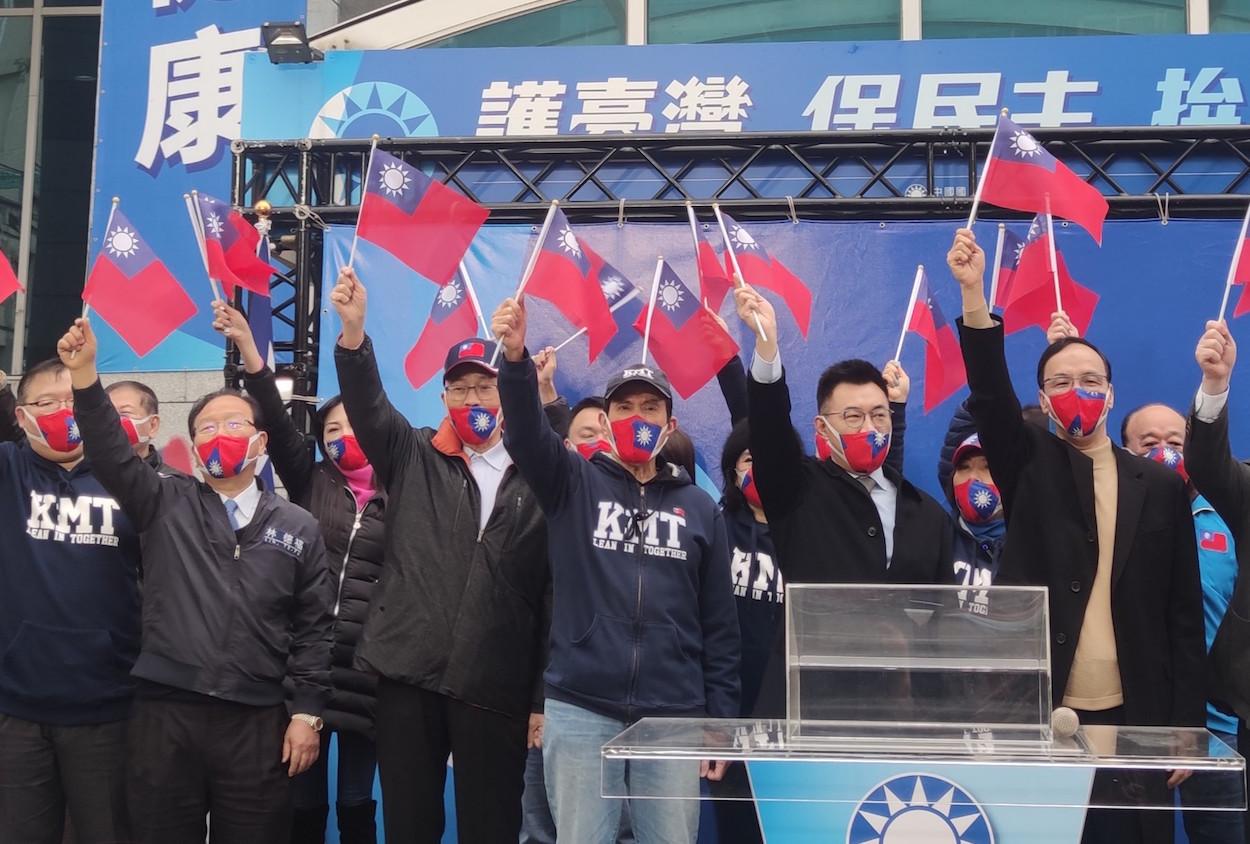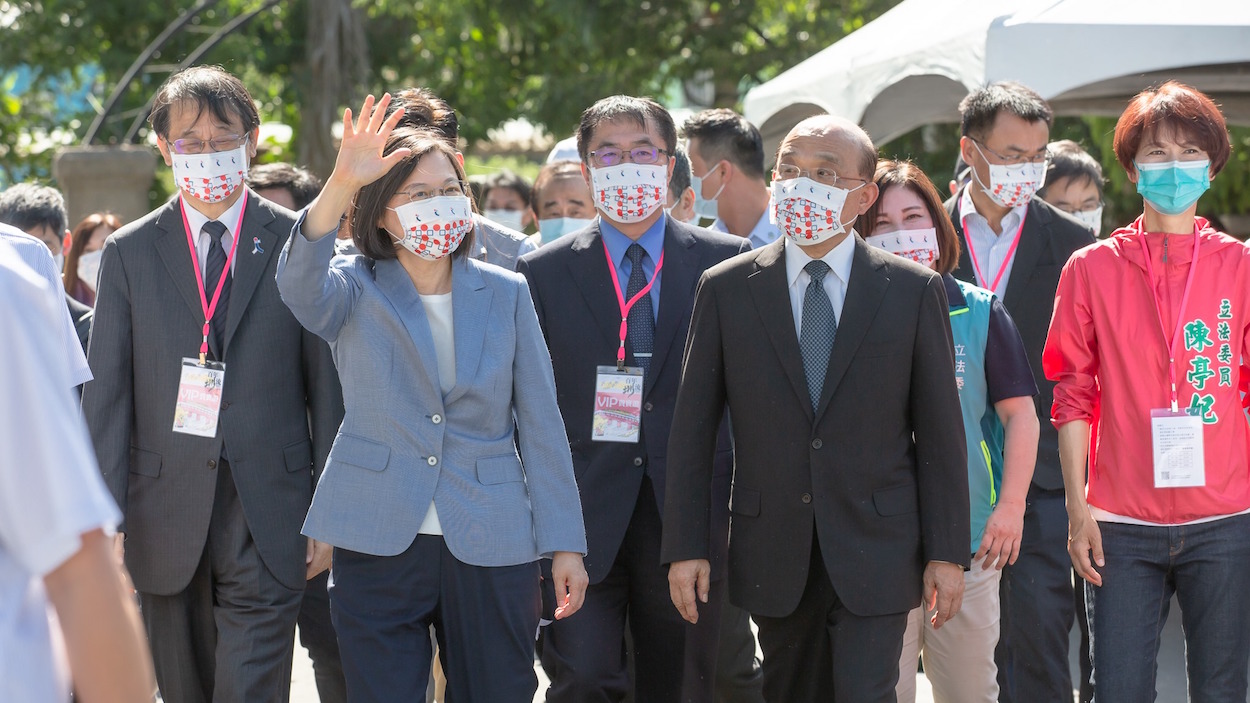by Brian Hioe
語言:
English
Photo Credit: Ma Ying-jeou/Facebook
FORMER PRESIDENT Ma Ying-jeou was again in the news earlier this week for his criticisms of the Tsai administration. Namely, Ma called for a return to the “original 1992 Consensus” (原汁原味的九二共識) at a conference in Taipei on restarting cross-strait dialogues between Taiwan and China.
This is hardly the only time in the past few years that Ma has sought to attack the Tsai administration on the issue of cross-strait relations, to call for a return to the 1992 Consensus. This may not be particularly surprising, seeing as Ma likely views the 1992 Consensus as his political legacy, and is reacting against the Tsai administration’s concerted efforts since 2016 to shift away from it.
 Former KMT chair and president Ma Ying-jeou (center). Photo credit: Ma Ying-jeou/Facebook
Former KMT chair and president Ma Ying-jeou (center). Photo credit: Ma Ying-jeou/Facebook
Likewise, for a former chair and president, Ma has taken an unusually active role in the KMT. Although current party chair Johnny Chiang initially suggested dropping the 1992 Consensus when elected last March, promising to change the pro-China image of the party and win back the support of young people, Chiang is now publicly deferential to Ma, and has long since backed away from the notion of abandoning the 1992 Consensus.
But in particular, during his recent criticisms of the Tsai administration, Ma cited the recent article in The Economist that claimed Taiwan to be the “most dangerous place on Earth”. Ma stated the majority of Taiwanese did not know how close Taiwan was to being caught in cross-strait hostilities and that, with the COVID-19 pandemic under control, now was the time to re-engage in cross-strait dialogues. Consequently, Ma lay the blame for the current low-point in cross-strait relations at the feet of the Tsai administration and called for her to return to “original 1992 Consensus,” claiming that Tsai should return to the 1992 Consensus if she has no other formula to stabilize cross-strait relations.
Through Ma’s comments, one can see how fear-mongering regarding the possibility of conflict in the Taiwan Straits is seized upon by the KMT for domestic political purposes. In response to Ma, the Mainland Affairs Council (MAC) hit back at Ma’s comments, asserting that the 1992 Consensus is now a thing of history, with China having long since moved the goalposts for the “consensus” to simply mean “One China”—with no room for “respective interpretations” of that China. The DPP also called Ma’s comments “out of step with the times” and “laughable.” Indeed, one notes that Ma’s comments lashing out at the Tsai administration often have the tenor of victim-blaming, seeing as it is China that decided to suspend cross-strait exchanges with the DPP and to increase military threats directed at Taiwan. Chiu Tai-san, the current head of the MAC is, in fact, seen as comparatively friendly to China, and Chiu has emphasized that he hopes to utilize “creative ambiguity” in cross-strait relations. However, this has not resulted in any improvement in cross-strait relations with China.
At the same time, Ma’s comments probably had multiple audiences in mind. Apart from simply seeking to attack the Tsai administration, Ma was likely hoping to set the tone for the KMT, in pushing the KMT toward using the issue of the 1992 Consensus as one with which to attack the DPP. The KMT has historically tried to win elections in Taiwan by positioning itself as the only political party in Taiwan that can maintain stable cross-strait relations and so Ma seems to hope that the KMT returns to using the 1992 Consensus as an issue with which to bash the DPP, emphasizing that the KMT was able to maintain stable cross-strait relations using the 1992 Consensus whereas the Tsai administration is unable to.
 Current president Tsai Ing-wen (second to the left) and premier Su Tseng-chang (second from the right). Photo credit: Tsai Ing-wen/Facebook
Current president Tsai Ing-wen (second to the left) and premier Su Tseng-chang (second from the right). Photo credit: Tsai Ing-wen/Facebook
To this extent, Ma is also hoping to send a signal to China, in trying to get China to indicate that it would be willing to engage in cross-strait dialogues or reduce military threats if Taiwan adheres to the 1992 Consensus. Ma may hope for China to once again conduct direct talks between the CCP and KMT, conducted on a party-to-party basis, similar to what occurred during Ma’s presidential term when Ma met with Xi Jinping in November 2015 in Singapore, or with the meeting between Eric Chu and Xi that took place in May 2015 in Beijing, Chu and Xi meeting in their capacities as heads of the KMT and CCP respectively, or the meeting between. then-KMT chair Hung Hsiu-chu and Xi. The KMT may believe that showing it is able to conduct direct dialogue with the CCP will prove beneficial to it electorally, again, in reemphasizing that it is the only party in Taiwan able to maintain stable cross-strait relations.
As such, one expects that attacks by Ma against the Tsai administration will continue. Ma will continue to use the 1992 Consensus as a point of attack and so this will be a continually talking point for Ma.

